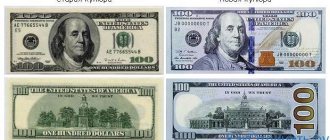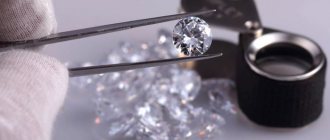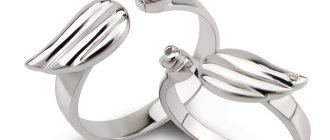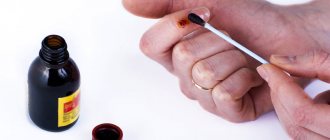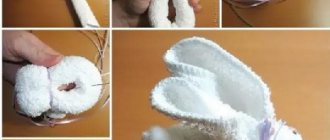Where can you get fake dollars?
Tourists are the main victims of scammers. When traveling to a country where they pay in American currency, study what a real dollar looks like.
Counterfeit money is obtained when exchanging money or making purchases in local stores. It is more difficult to encounter counterfeit banknotes in Russia. If dollars are bought from a bank, the risk is zero.
When making financial transactions in exchangers, you should be careful. Banknotes are also carefully inspected when receiving a foreign money transfer.
How much does it cost to check currency at a bank?
0.1 BYN per banknote (min 0.5 BYN, max 70 BYN). As can be seen from the table, it is possible to verify the authenticity of banknotes in 9 Belarusian banks
.
Interesting materials:
What is needed for the hotel business? What is needed to open a gas station in Ukraine? What is needed to open a hookah bar in Belarus? What is needed to open a LLC in Kyrgyzstan? What do you need to open a hairdressing salon? What is needed to open a beer store in Kazakhstan? What do you need to send by transport company Energia? What do you need to move to Hungary? What is needed to retake the theory in the traffic police after deprivation? What is needed to cross the Belarusian border?
The difference between the new 100 dollar bill and the old one
In 2010, bank notes with a high degree of security began to be issued. It is quite difficult to counterfeit them, so criminals often work with old-style money. The new 100 US dollars are distinguished by a bluish color, while the old ones are made in green tones. The following signs are also characteristic:
- The banknote has a three-dimensional security tape.
- On the front side, to the right of the president's portrait, symbols of freedom are added: excerpts from the Declaration of Independence, the pen with which it was signed, and an inkwell.
- The portrait itself is enlarged and slightly shifted to the left; the oval frame framing it is missing.
- The enlarged number “100” is printed on the back.
Check Features
Since the old-style 100 dollar bill is most often counterfeited, it is worth considering its characteristic features, which are important to consider when assessing authenticity:
- Material. Genuine dollars are printed on thick paper that does not lose its properties after getting wet.
- Volumetric printing. When palpating the area where it is located, there should be no irregularities.
- Lettering color. The “100” symbols on the front side change shade when tilted. Depending on the lighting, the color varies from green to black.
- Bulge portrait of Benjamin Franklin. A counterfeit banknote does not have this feature.
- Matching numbers. Fraudsters take this point into account when counterfeiting money. However, several products from a batch may bear the same numbers. When receiving several bank notes, it is worth comparing the numbers: they should not completely coincide.
- The presence of a protective strip with the inscription “USA 100”. This feature is inherent only in genuine banknotes.
- Clarity of the frame, expressiveness of the drawings. For fakes, these elements are slightly blurred. The president's portrait can also be unclear.
Rare US banknotes
Until 1945, issues of such currencies with different denominations were organized:
- 500$;
- 1000$;
- 5000$;
- 10000$.
Beginning in 1969, it was decided to gradually phase them out of use. It is interesting that at the moment only 10 thousand banknotes remain in circulation. They are tracked at the official level by the Federal Reserve. Currently, there are 336 banknotes left in circulation. You can buy 5000 thousand currency at an auction. Its starting price is exactly 2 times more expensive than the face value itself. If you are interested in how to earn cryptocurrency, then it is better to bet on getting acquainted with exchanges and other sites, but not buying these coins for rare American bills.
500 USD
The banknote features a portrait of the 25th President William McKinley. It was under this policy that the United States became a colonial state. On the reverse is the denomination itself. Money first came into circulation in 1928. Lost relevance due to the formation of the “strength” of American dollars.
1000 USD
On the front is a portrait of US President Grover Cleveland, who was both the 22nd and 24th President of the States. He became the only president to be re-elected to office, but with a break. At the end of 2010, 165 thousand units remained in use. The reverse shows the denomination, and there are also banknotes with this denomination, but which were issued at the beginning of the 20th century, and they depict other political leaders. And if you are interested in how to buy in an online store and how many dollars you need to have to get started, I recommend reading articles on www.gq-blog.com with valuable tips.
5000 USD
The bill is decorated with the image of James Madison, who co-authored the Bill of Rights, the US Constitution and the 4th president of the state. Today, such banknotes are in the hands of collectors and have been removed from free circulation. According to the Federal Reserve Service, more than 340 bills have not yet been seized and are in hand. Information about the sale of certain items is periodically included in the data on upcoming auctions.
10,000 USD
This note was last issued in 1944 and features a portrait of lawyer Samuel Chase on the front. It was he who wrote the Declaration of Independence, was the chief justice of the Supreme Court, and led the Treasury Department. Currently, there are only 336 banknotes left and only in private collections. I will say that the pictures changed: the first bill of this denomination was a security paper with a portrait of Andrew Jackson.
100,000 USD
It depicts a portrait of the 28th US President Woodrow Wilson, who received the Nobel Prize in 1919. It is he who is the author of the creation of the Federal Reserve System and it is not at all surprising that such an image was placed on one of the most expensive banknotes not only in America, but in the world as a whole. It is significant: money was used only in US domestic use in 1934 and 1935.
1,000,000 USD
It's hard to believe, but such a bill really exists. But this is not so much a means of payment as an original and very expensive souvenir that was released in 1988. It was made at the request of Teri Steward, chairman of the International Association of Millionaires, a co-organizer of the same organization. The front features a “portrait” of the Statue of Liberty. To become a member of such a society, it was necessary to purchase this bill. It has all the classic security features and is printed on special paper. Despite the fact that the MIR card does not have such a large limit, Russian owners can also use it in the USA.
On the reverse is the inscription: “This certificate is guaranteed solely by faith in the American Dream.”
16 years ago, a resident of “The States” decided to pay with a similar bill in a supermarket in South Carolina, but they did not accept her money and security was called. How the situation ended is not disclosed.
Home methods for verifying the authenticity of money
There are several methods for determining the quality of a banknote without the use of special equipment.
Feelings when touched
Dollar bills are printed on a special type of paper that is fairly easy to identify. The material is made from cotton or linen using the intaglio technology, which involves pressing into an engraved plate.
The paper is characterized by a rough surface and high density.
If you run your hand over a banknote, the ink does not remain on your fingers. Money that does not have the above characteristics is considered counterfeit. Another distinctive feature is the relief of the president’s clothing, characteristic of the portrait on the front side. If the roughness is not felt, the banknote is counterfeit.
Banknote size
All dollars are printed to a standard established over 100 years ago. The banknote size is 66x156 mm. Please allow 2mm error.
Color fibers
When producing banknotes, red and blue inclusions are introduced into the paper. They are located on both sides in a chaotic manner. The presence of such elements is difficult to determine with the naked eye. In counterfeit banknotes, such microfibers are not located in the thickness of the paper, but on the surface.
Ultraviolet testing helps identify counterfeit money. The glow of colored inclusions is one of the signs of the authenticity of dollars.
Color and print quality
When making money, a special paint is used that does not fade or change color when exposed to sunlight or liquids. The paper does not contain optical brightener and is therefore characterized by a greenish-yellow color.
Under ultraviolet light, the banknote darkens.
Serial number and control letter
Each banknote has a numerical code. For $1 banknotes, the serial number consists of 2 letters and 8 numbers. The code for the remaining banknotes consists of 11 characters. All letters and numbers are printed in the same style with the same spacing. The serial number is located in 2 places. The control letter corresponds to the code of the bank branch that issued the money.
Dollar bill frame
To check the authenticity of $50 or $100, you need to look at the frame under a magnifying glass. If the money is real, the frame is clearly drawn.
Fake money has lower print quality.
Image on the banknote
To be able to distinguish a counterfeit bill from a genuine one, you need to know which presidents’ portraits correspond to each denomination. Since scammers often work with $100, you need to remember the easily recognizable Franklin. Next to the portrait there is a small inscription - USA. Images are drawn clearly, there are no blurred lines.
Additional signs of authenticity
When checking banknotes, you should pay attention to the following characteristics:
- Water marks. It is necessary to inspect the banknote against the light. If it was printed after 1996, there is an image of the President on the right side, invisible in low light. The watermarks of genuine money are made in several shades of gray. A monochromatic image is a sign of a fake.
- Protective strip. Detected by inspection against light. The stripes are applied differently on banknotes of different denominations. For example, on 20 dollars it is on the right side, on 50 dollars it is on the left side of the portrait of the president. This method eliminates counterfeiting by adding an additional zero or whitening the banknote.
- Iris roll. It represents a smooth transition from one color to another. This is ensured by the use of special technology developed specifically for printing money. It is impossible to recreate an iris roll on a simple printer.
- Magnetic protection. Part of the image contains a ferromagnetic component. You can check this sign using a special sensor.
- 3D protective tape. Its presence is typical for the new 100 dollar bills. The tape contains bells and numbers that move when tilted.
- Background glow. Real banknotes do not have this feature. Household paper used by counterfeiters glows under ultraviolet rays.
Serial number
The numbering on both sides of the bill must be the same, all numbers must match.
The series must be at the same level on both sides of the banknote.
Numbering check: the second letter in the first row must also appear in the second row (F)
The letter and number below the numbering must correspond to the order in the English alphabet (A - 1, B -2, C- 3, and so on). The letter is the branch of the Federal Reserve Bank that prints bills.
Actions to take when a counterfeit is detected
The use of counterfeit banknotes is punishable by law. Therefore, you need to know not only how to distinguish a dollar from a fake, but also what to do if fraud is detected. Proceed as follows:
- Place the bill in a clean bag. You need to touch the banknote as little as possible. This increases the likelihood of retaining the counterfeiter's fingerprints.
- They try to remember the person selling counterfeit money. No less important are the place, time and circumstances of receiving the fake.
- Contact the police. The banknote is seized as evidence.
Counterfeit money cannot be stored or used to pay for goods and services. A person who commits such acts is charged with distributing counterfeit notes.
Paper
- thinner than usual. The counterfeit paper is ordinary paper made from cellulose, so it is much thicker than a real bill.
- rustles because paper is the same fabric, it consists of cotton (75%) and linen (25%);
- not afraid of water. If you wet it, then after drying it will not lose its properties, but ordinary paper becomes unusable after such a procedure.
Print clarity
- Always very clear print. It is printed with ink that is not commercially available. When looking at a bill through a magnifying glass, you can see even inscriptions of 100 dollars, etc. In a fake, small inscriptions will usually be blurry.
- Volumetric printing. This is done so that even a blind person can determine by touch what denomination the banknote is.
- Rough print. If you run your fingernail along the collar of B. Franklin's camisole, it will cling to the design.
The inscription “$100” on both old and new banknotes is two-color . If you look straight, you see one color (green), if you turn the banknote at an angle, the color changes (black).
It's hard to fake, so that's the first thing you should pay attention to.
If you hold the banknote up to the light, you will see:
- A security thread with an inscription on the left side of the banknote, which corresponds to the denomination of the bill. The inscription can only be read through ultraviolet light.
"Frame" of the bill
If you take a magnifying glass, you will notice that the “frame” of the bill is very clearly drawn. Fakes will not have this quality.
Banknote fibers
fibers on the back of the bill : red, blue or green. Like pieces of fabric or interspersed threads. And this fiber can be picked out with a needle. On fakes this is a painted fiber.
